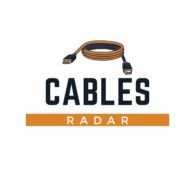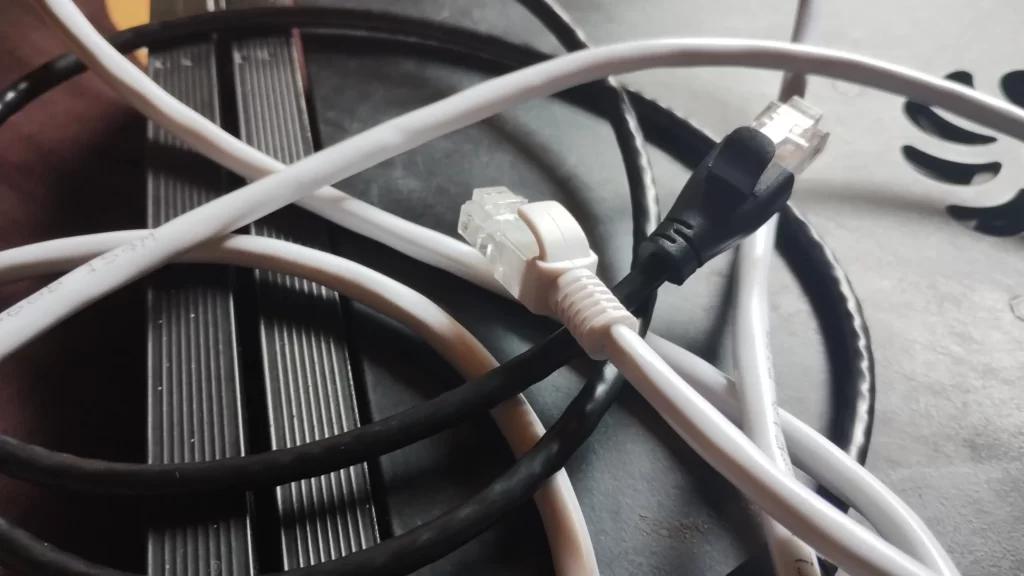Internet is important for all of us, so we are cautious when it comes to the matter of Ethernet Cable.
Our Ethernet cable spreads everywhere in our house, often roof, walls, etc. So it has to tolerate bad weather, sun and often other heat.
But, How To Protect Ethernet Cable From Heat?
- Choose a Cable with a UV-resistant Coating for Outdoor Use
- Avoid PVC piping that has not been UV-coated
- Use Polypropylene Cable
- Use Cable Straps to keep your Ethernet Cord in Place
- Choose an Appropriate Jacket Type
Read below to understand these methods or how to use these methods to protect your Ethernet from heat. Let’s start.
Can Ethernet Cables Withstand Heat?
Ethernet cables can be used in almost any environment. You can count on your Ethernet cable to work correctly, whether in extreme heat or cold.
However, it is essential to know precisely how much heat an Ethernet cable can withstand for effective Ethernet cable maintenance and installation.
When you look at cable specs, you will notice sections that specify how your cable can run efficiently.
The recommended comfortable temperature range for storage and shipping of Ethernet cables is -20 °C to 75 °C (-4 °F to 167 °F), which ensures that your cable will be in good shape no matter where it comes from.
Next, the recommended temperature range for the installation process is 0°C to 75°C (32°F to 167°F).
Though it can be installed and used in any environment, installing it in cooler temperatures is a little more challenging as the cable jackets can stiffen and become more difficult to bend.
Finally, Ethernet cables must be kept in a temperature range of -20 °C to 60 °C (-4 °F to 140 °F) to function correctly when pulling data from them.
This refers to the time after you have installed your cable and started using the lines to run your apps.
Remember that such a temperature range is essential for proper cable maintenance following the installation, as it guarantees that your cables will function properly and last for several years.
How Much Heat Can an Ethernet Survive?
Extremely hot or cold temperatures can cause various problems for eternal cables. Due to this, temperature ranges are listed on any significant ethernet cable manufacturer’s website.
These ambient temperatures for installation, operation, and storage, which are either set by the manufacturer or by ANSI/TIA 568, should not exceed when it comes to temperature extremes.
The maximum ambient temperature limit for Ethernet cables is 167 °F. Above that temperature, the wire will not reliably pass data.
Both the outdoor and indoor cables have the same maximum operational temperature extremes. A fiber optic cable should be used when the outside temperature exceeds 167 °F.
Can Ethernet Cable Be Exposed To Sun?
Ethernet cables make connecting PCs, routers, and switches portable and straightforward. If you utilize an outdoor Ethernet cable, you must protect it from rain and the weather.
Other than that, exposure to UV light from the sun is one of the issues with running an Ethernet cable outside if it is kept above ground.
The jacket, and ultimately the inner insulation, will decay and fall apart unless the cable is built correctly with UV-stable material.
The ethernet wires of exterior grade are waterproof and do not require a conduit buried in the ground.
So, consider choosing a waterproof Cat 6 cable with a UV protection jacket if you are not burying the cable to avoid damage from sunlight exposure.
Also, this is equally essential if you are stringing the cable up the side of a house or across a roof.
How To Protect Ethernet Cable From Sun?
Follow the below-listed ways of limiting UV or sun rays to protect your Ethernet cables from any long-term damage.
1. Choose a Cable with UV-resistant Coating for Outdoor Use
Some Ethernet cables feature a UV-protective outer coating to protect them from the sun.
Ensure that the cable you purchase has the “UV-resistant” label, especially if you run it outside rather than underground.
2. Avoid PVC piping that has not been UV-coated
The majority of Ethernet cables built from PVC pipework are not UV-resistant. If you use a PVC cable in direct sunlight, be sure it’s UV-resistant before you buy it.
3. Use Polypropylene Cable
Alternatively, you can use a cable composed of polypropylene, which is UV-resistant by nature.
4. Use Cable Straps to keep your Ethernet Cord in Place
Take the help of cable straps to attach your cable away from direct sunlight.
To safely and effectively secure the cable to a building or stable structure, drill two holes on either side of the cable and screw in the cable strap. Cable straps are available online and at most hardware stores.
5. Choose an Appropriate Jacket Type
Other than the option of using cable restraints or straps to keep an outdoor Ethernet wire safe from the sun, the jacket that wraps the wiring of each cable can also act as a protective barrier against dangers.
Different Ethernet cable jacket ratings will provide resistance to varying forces.
You can try the CMX-rated jackets, specifically built for use outdoors. Other than being UV-resistant, CMX cables can also be buried in the ground, where they will be less likely to be tampered with.
Can You Run Ethernet Through Heating Ducts?
Most people wonder if they could wire Ethernet via air ducts when running cable since these areas appear ideal for quickly concealing wires and connecting rooms.
However, there is a lot to learn about your air ducts and different types of ethernet connections before you start pushing wires.
Although Ethernet wire can be run through air ducts, it can also be against local building codes. Teflon-coated or PTFE cable’s heat resistance makes it ideal for air ducts.
Signal difficulties will not occur with regular or extra shielding Ethernet cable, but it is usually worth the spare time to run it through the wall instead.
So now I hope you can make your Ethernet cable weatherproof and you will not have any tension with its heat. For more similar posts, always stay connected with us.



